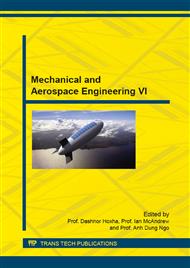p.297
p.303
p.308
p.314
p.319
p.324
p.329
p.339
p.344
Real-Time 2D Surface Profile Mapping of Biological Tissue with Force Feedback in Robot-Assisted Minimally Invasive Surgery
Abstract:
It has been more than 20 years that robot-assisted minimally invasive surgery (RMIS) has brought remarkable accuracy and dexterity for surgeons along with the decreasing trauma for the patients. In this paper a novel method of the tissue’s surface profile mapping is proposed. The tissue surface profile plays an important role for material identification during RMIS. It is shown how by integrating the force feedback into robot controller the surface profile of the tissue can be obtained with force feedback scanning. The experiment setup includes a 5 degree of freedoms (DOFs) robot which is equipped with a strain-gauge ball caster as the force feedback. Robot joint encoders signals and the captured force signal of the strain-gauge are transferred to developed surface transformation algorithm (STA). The real-time geometrical transformation process is triggered with force signal to identify contact points between the ball caster and the artificial tissue. The 2D surface profile of tissue will be mapped based on these contact points. Real-time capability of the proposed system is evaluated experimentally for the artifical tissues in a designed test rig.
Info:
Periodical:
Pages:
319-323
Citation:
Online since:
October 2015
Authors:
Price:
Сopyright:
© 2015 Trans Tech Publications Ltd. All Rights Reserved
Share:
Citation:


